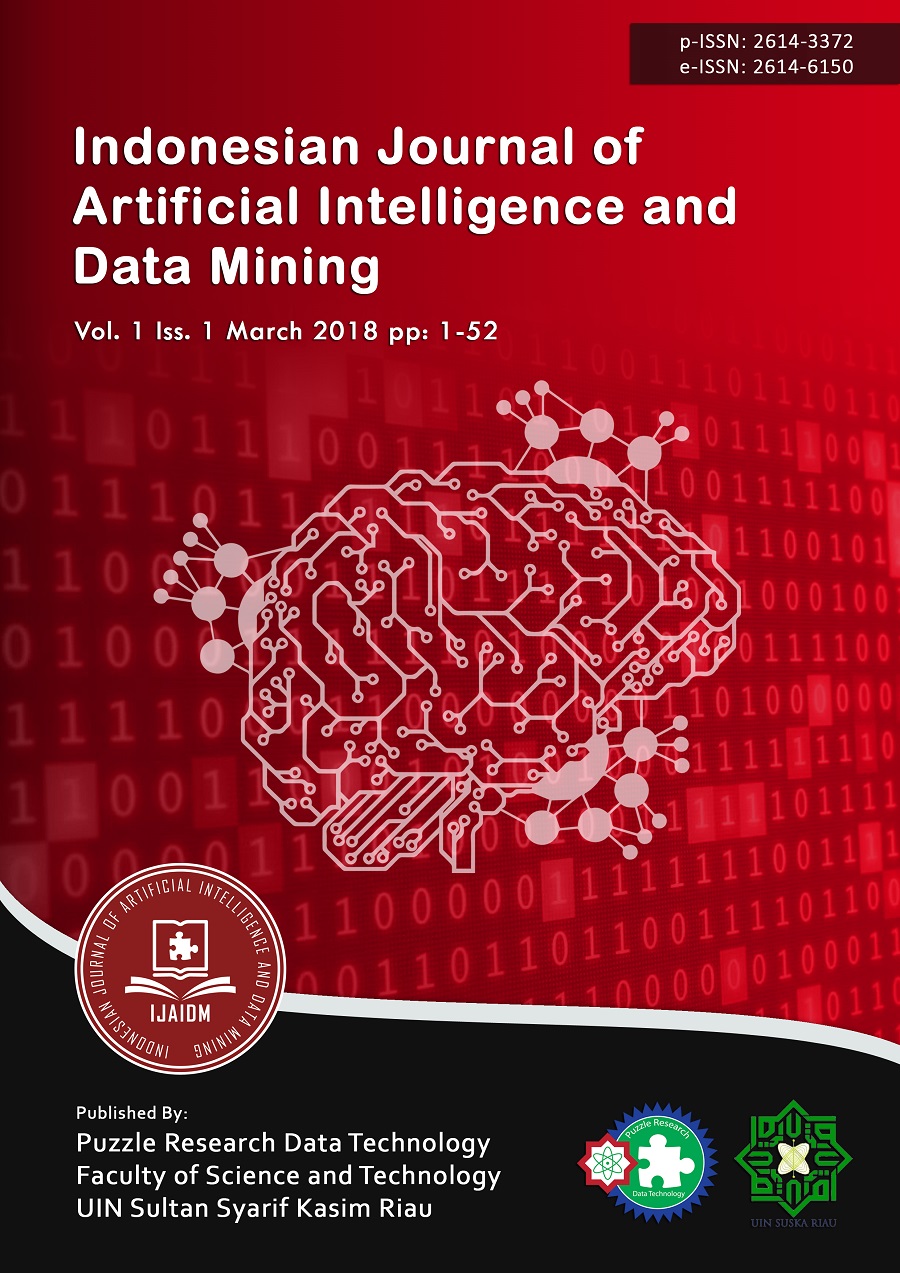Sentiment Analysis Of Cyberbullying On Twitter Using SentiStrength
DOI:
https://doi.org/10.24014/ijaidm.v3i1.9145Keywords:
Cyberbullying, Sentiment analysis, SentiStrength, TwitterAbstract
Cyberbullying is a form of bullying that takes place across virtually every social media platform. Twitter is a form of social media that allows users to exchange information. Bullying has been a growing problem on Twitter over the past few years. Sentiment analysis is done to identify the element of bullying in a tweet. Sentiments are divided into 3 classes, namely Bullying, Non-Bullying and neutral. There are three steps to classify cyberbullying i.e. collection of data set, preprocessing data, and classification process. This research used sentiStrength, an algorithm which uses a lexicon based approach. This SentiStrength lexicon contains the weight of its sentiment strength. The assessment results from 454 tweets data obtained 161 tweet non-bullying (35.4%), 87 tweet neutral (19.1%), and 206 tweet bullying (45.4%). This research produces an accuracy value of 60.5%.References
R. Nasrullah, Media Sosial: Perspektif Komunikasi, Budaya, dan Sosioteknologi. 2015.
M. M. Pandie and I. T. J. Weismann, “Pengaruh Cyberbullying Di Media Sosial Terhadap Perilaku Reaktif Sebagai Pelaku Maupun Sebagai Korban Cyberbullying Pada Siswa Kristen SMP Nasional Makassar,” J. Jaffray, 2016.
M. S. Mubarok, Adiwijaya, and M. D. Aldhi, “Aspect-based sentiment analysis to review products using Naïve Bayes,” in AIP Conference Proceedings, 2017, p. 020060.
M. S. Neethu and R. Rajasree, “Sentiment analysis in twitter using machine learning techniques,” in 2013 Fourth International Conference on Computing, Communications and Networking Technologies (ICCCNT), 2013, pp. 1–5.
M. Taboada, J. Brooke, M. Tofiloski, K. Voll, and M. Stede, “Lexicon-Based Methods for Sentiment Analysis,” Comput. Linguist., vol. 37, no. 2, pp. 267–307, Jun. 2011.
M. Thelwall, “The Heart and Soul of the Web? Sentiment Strength Detection in the Social Web with SentiStrength,” 2017, pp. 119–134.
M. Rashmi, “Introduction to Information Retrieval Systems,” Int. J. Recent Innov. Trends Comput. Commun., vol. 3, no. 4, pp. 2051–2054, 2015.
C. D. Manning, P. Raghavan, and H. Schutze, Introduction to Information Retrieval. Cambridge: Cambridge University Press, 2008.
S. Ceri, A. Bozzon, M. Brambilla, E. Della Valle, P. Fraternali, and S. Quarteroni, “An Introduction to Information Retrieval,” in Web Information Retrieval, Berlin, Heidelberg: Springer Berlin Heidelberg, 2013, pp. 3–11.
M. Thelwall, K. Buckley, G. Paltoglou, D. Cai, and A. Kappas, “Sentiment strength detection in short informal text,” J. Am. Soc. Inf. Sci. Technol., vol. 61, no. 12, pp. 2544–2558, Dec. 2010.
M. Thelwall, K. Buckley, and G. Paltoglou, “Sentiment strength detection for the social web,” J. Am. Soc. Inf. Sci. Technol., vol. 63, no. 1, pp. 163–173, Jan. 2012.
F. Z. Tala, “A Study of Stemming Effects on Information Retrieval in Bahasa Indonesia,” M.Sc. Thesis, Append. D, 2003.
D. H. Wahid and A. SN, “Peringkasan Sentimen Esktraktif di Twitter Menggunakan Hybrid TF-IDF dan Cosine Similarity,” IJCCS (Indonesian J. Comput. Cybern. Syst., vol. 10, no. 2, p. 207, Jul. 2016.
R. Sianipar and E. B. Setiawan, “Pendeteksian Kekuatan Sentimen Pada Teks Tweet Berbahasa Indonesia Menggunakan Sentistrength,” e-Proceeding Eng. Vol.2, No.3 Desember 2015, 2015.

